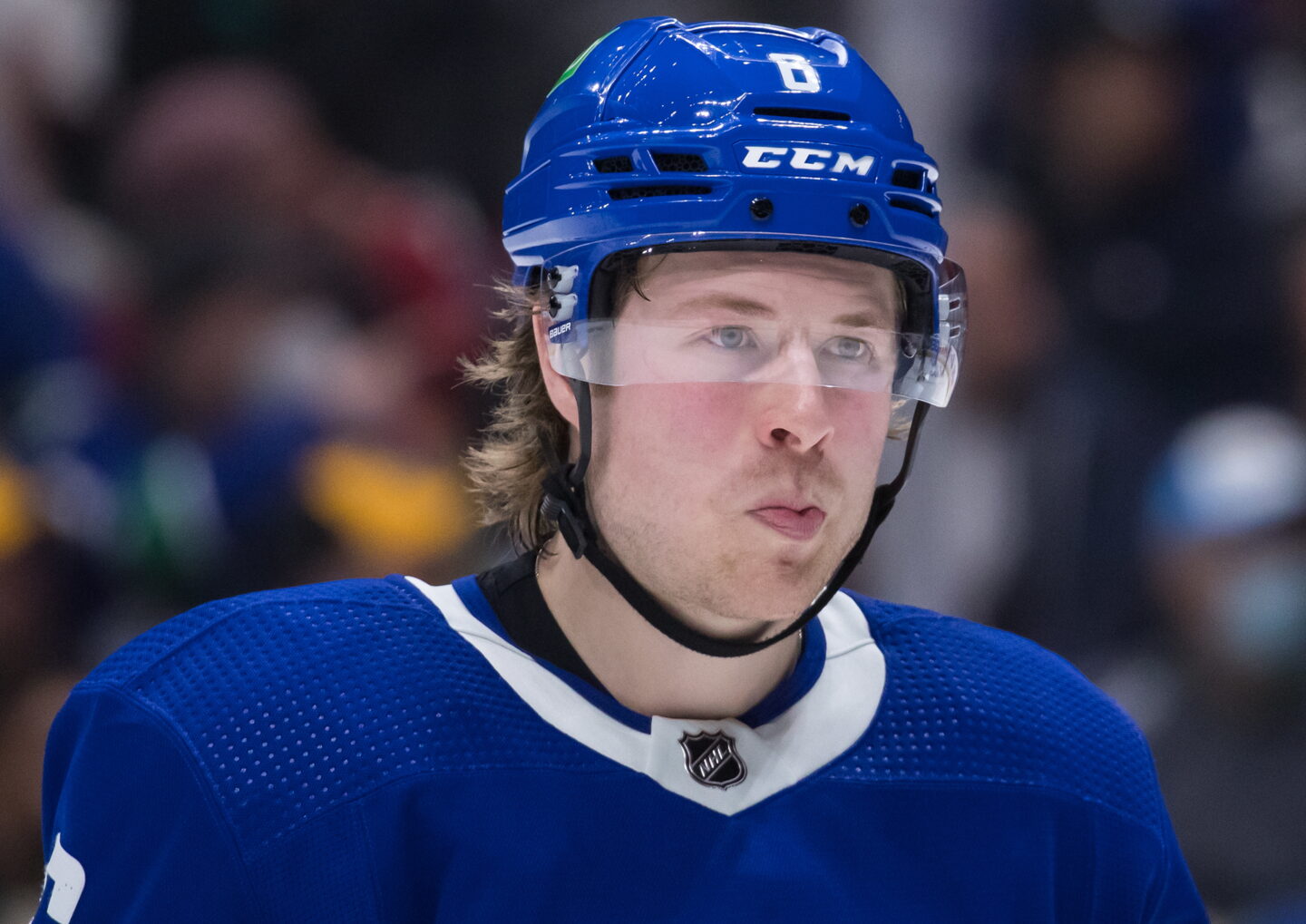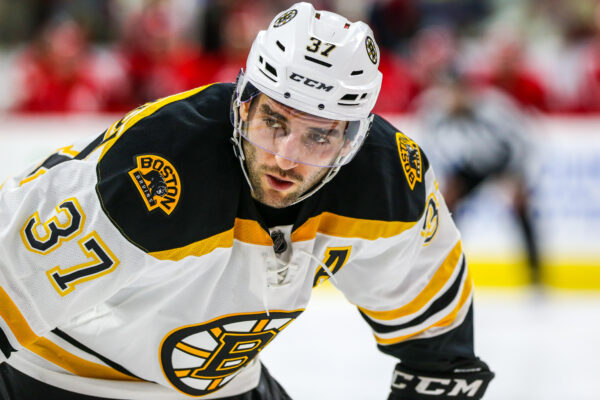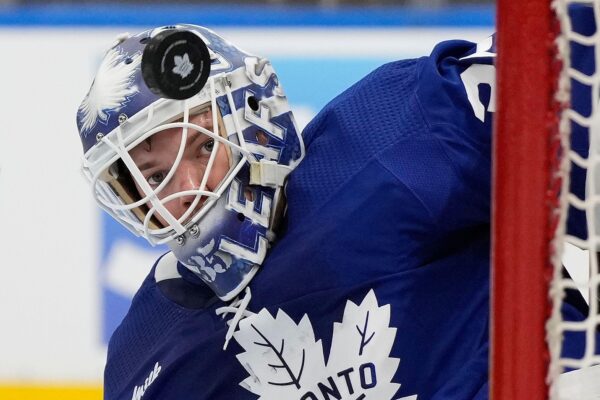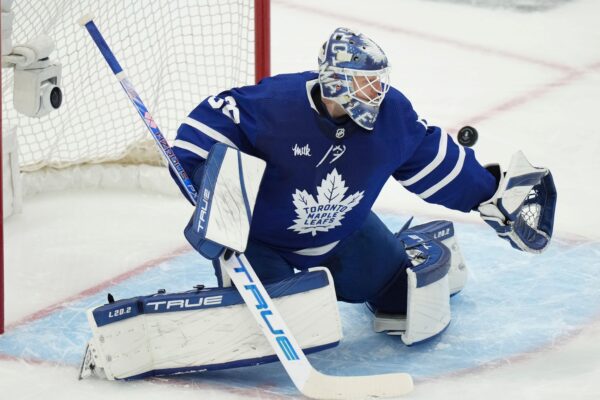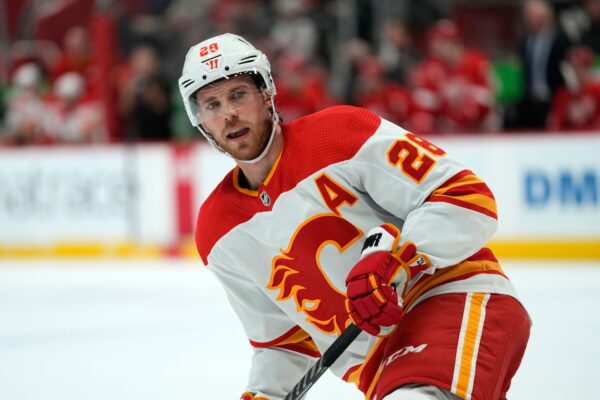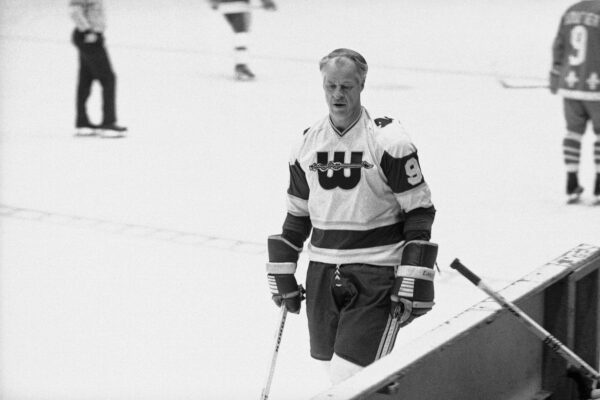Imagine that your favourite NHL team got an increased salary cap of between $3 – 4M next season?
What could your team do with that extra liquidity? Rebuild the lines? Get that very special goalie that’s on Free Agency or will it simply go on paying the renegotiated contract for their prized forward?
Speculation of such an increase comes from recent discussions with hockey insider Frank Seravelli.
What did he say?
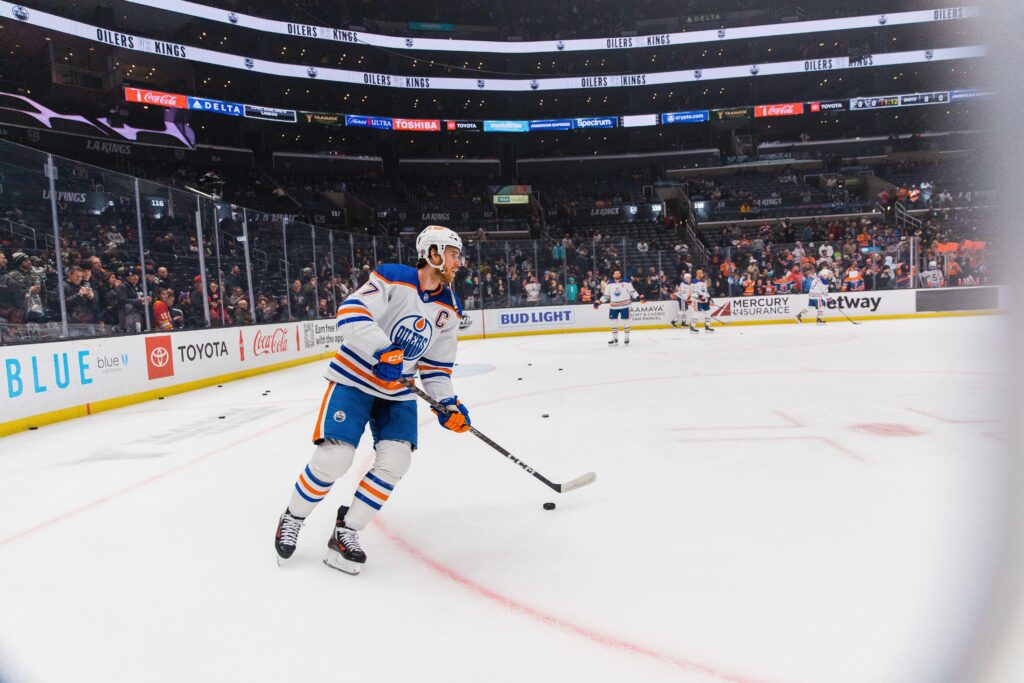
The Daily Faceoff’s Frank Seravalli spoke twice this month about a possible increase in the salary cap for organisations in the new season (2023/24).
Back on May 15th on the OilersNation Everyday YouTube show (associated with Edmonton Oilers), Seravalli responded to a question from host Tyler Yaremchuk.
Tyler Yaremchuk: ‘There is a real chance this thing goes up three or four million, right?’
Frank Seravalli: ‘Yeah, 100%. And I think it’s in fact the most likely avenue given where we are with revenues, given where we are with the amount of money that’s been paid back.
‘Probably 95 or 97 percent of the debt that was owed from players to owners. No stakeholder that’s involved in this process wants to see the cap frozen for another year.’
Context
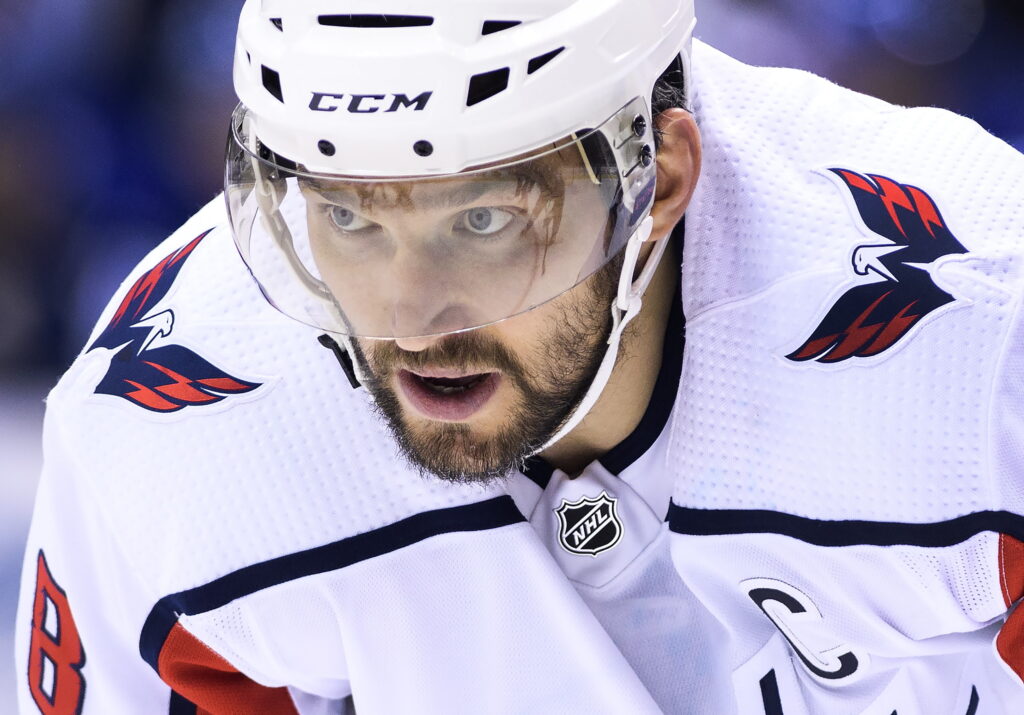
At this current time, NHL franchise teams have a salary cap of $82.5M.
That’s the sum of money for the 2022/23 season, that is agreed between the NHL and the Players Association within their Collective Bargaining Agreement.
The cap is a set amount calculated through the Hockey Related Formula and based on projected revenues made from tickets to TV rights and merchandising. The cap is split 50/50 between players and owners.
Salary Caps were introduced in 2004/05 so that each team gets a fixed sum of money per season. It’s a hard limit to prevent larger franchises monopolising and thus making it fairer for smaller franchises to compete.
The NHL also holds a percentage of the player’s salary back in escrow, meaning that once all the pennies of revenue and expense are accounted for at the end of the year, they’ll write the players a cheque with an amount proportionate to revenues.
The percentage is expected to be six percent across the next three seasons (23 – 26).
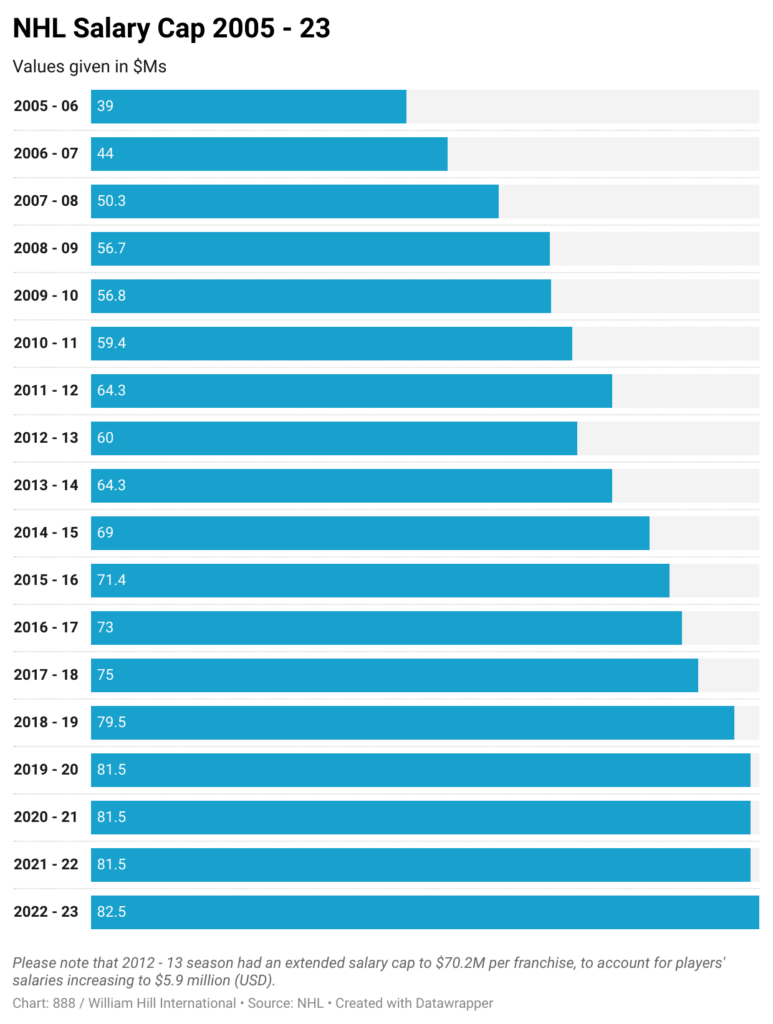
There’s debt?
The link between player allocated salaries and projected revenues broke down during the pandemic period, which meant that players ended up owing $1.25BN to owners because of the 50/50 split.
Post pandemic, the salary cap sat at $81.5M across the three seasons between 2019 – 2022, only increasing by $1M to $82.5M for 2022/23.
Gary Bettman announced in December last year that the current escrow debt owed by players to owners, sat at ‘approximately $70 million’.
For the sum to be repaid in full, the NHL would need to make a projected $140 to $150M in revenue in the remaining six months of the current season.
If not, teams could be projected to get another $1M (or more) for 2023/24, (around $83.5M). If it remains at $1M, that could effectively mean a fourth straight season with a salary cap freeze.
There’s good news?
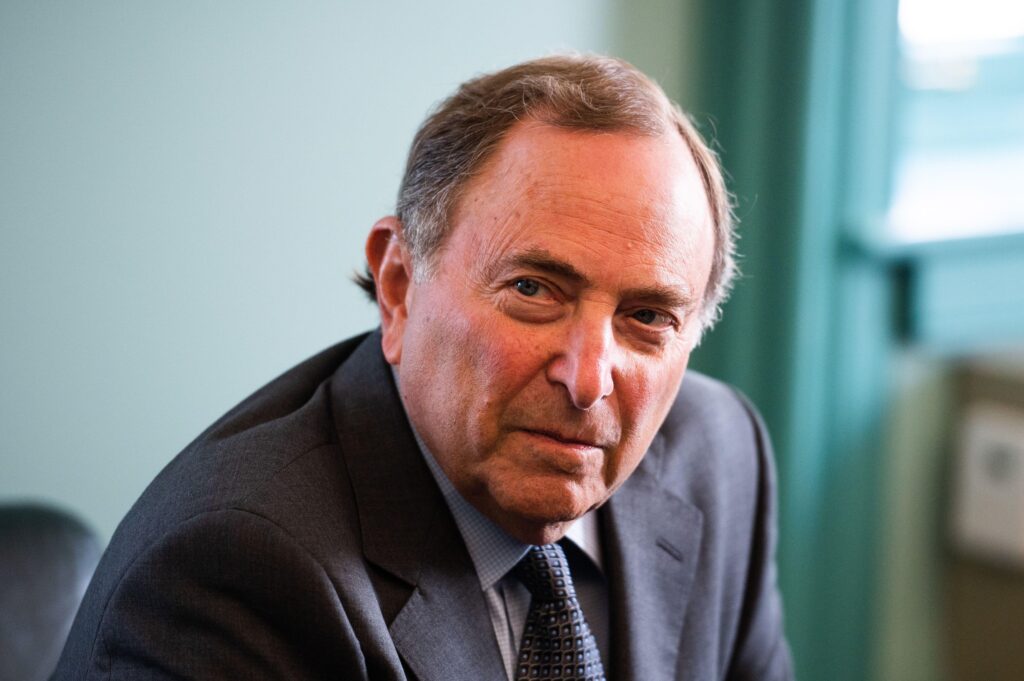
Seravalli would write that based on his calculations, if the debt was $70M in December, that would signal that over 95% of the $1.5BN debt accrued in the past three years, has been repaid.
He added that Bettman was positive that the retirement of the escrow debt was just on the horizon thanks to a financial comeback.
‘What’s clear is we’ve had a robust comeback post-Covid and revenues are growing quite nicely,’
‘Collectively we have done quite well, meaning us and the players, by having things come back as strong as they have where it’s crystal clear that certainly this is going to be paid off in the not-so-distant future.’
Bettman suggested summer, according to the hockey insider. If the debt could be concluded by then, the cap could indeed rise to around $86.5M. That’s around $4M extra.
Not the end of it
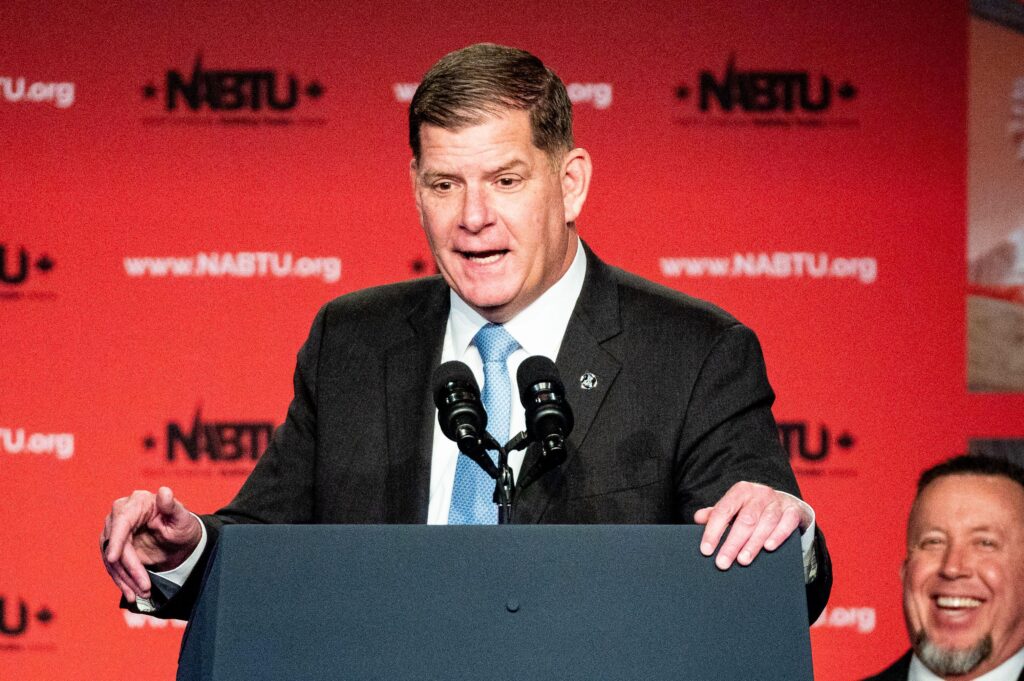
In an earlier interview on the FlamesNation BarnBurner YouTube show earlier in May, Seravalli would discuss how the players could exercise some leverage to negotiate a cap increase, thanks to Hockey Related Revenue (HRR) claims.
‘The players have a series of outstanding HRR claims going back, I think, three seasons, which I believe results in more than $100 million in claims.
‘I think that Gary Bettman wants them to walk from those claims in exchange for the cap going up by a certain threshold next season, which they can do without increasing the escrow cap.
‘It will be a negotiation, and this will be the first test for Marty Walsh, the new NHLPA executive director.’
The NHL Players Association’s Executive Director Marty Walsh, is expected to meet with the NHL to discuss an extended 84 game regular season in return for a cap increase.
That’s it?
In Seravalli’s conclusion on the salary cap increase, he told the OilersNation Everyday show said there still needed to be formal negotiations.
However, there were grounds to call for one without causing too much trouble for the players and teams.
